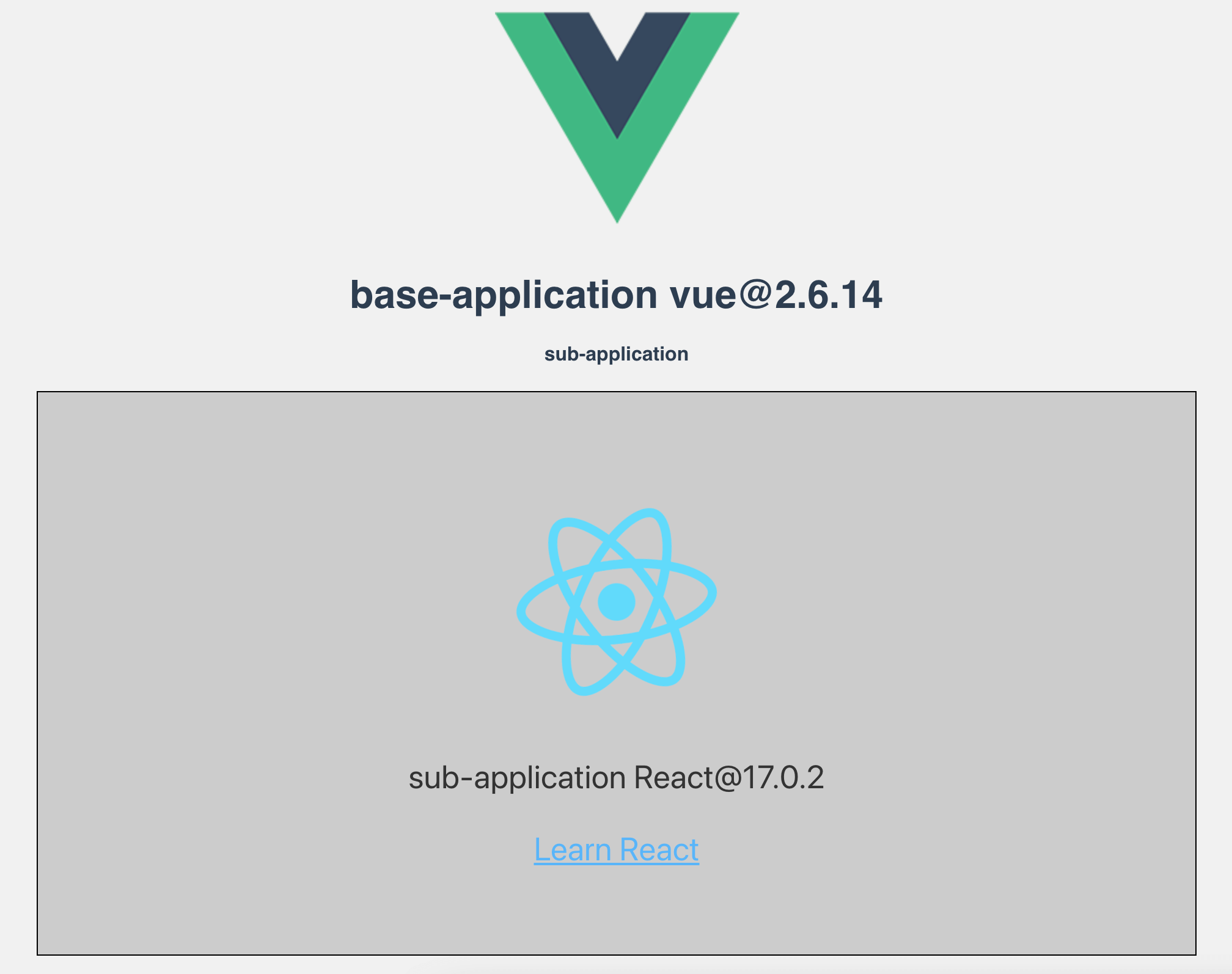






English|简体中文|Documentation|Discussions|Gitter
📖Introduction
micro-app is a micro front-end framework launched by JD Retail. It renders based on webcomponent-like and realizes the micro front-end from component thinking, it aiming to reduce the difficulty of getting started and improve work efficiency.
It is the lowest cost framework for accessing micro front-end, and provides a series of perfect functions such as JS sandbox, style isolation, element isolation, preloading, resource address completion, plugin system, data communication and so on.
micro-app has no restrictions on the front-end framework, and any framework can be used as a base application to embed any type of micro application of the framework.
How to use
The micro front end is divided into a base application (also called main application) and a micro application.
Here is a common example: the base application uses the Vue framework, uses history routing, the micro application uses the react framework, and uses hash routing. We list the modifications that need to be made by the base application and the micro application, and introduce the use of micro-app in detail.
base application
1、Install
yarn add @micro-zoe/micro-app
2、import at the entrance
import microApp from '@micro-zoe/micro-app'
microApp.start()
3、Use components in page
<template>
<micro-app name='my-app' url='http://localhost:3000/'></micro-app>
</template>
micro application
Set cross-domain support in the headers of webpack-dev-server
devServer: {
headers: {
'Access-Control-Allow-Origin': '*',
},
},
The above micro front-end rendering is completed, and the effect is as follows:

More detailed configuration can be viewed Documentation.
🤝 Contribution
If you're interested in this project, you're welcome to mention pull request, and also welcome your "Star" ^_^
development
1、Clone
git clone https://github.com/micro-zoe/micro-app.git
2、Install dependencies
yarn bootstrap
3、Run project
yarn start
For more commands, see DEVELOP
FAQ
What are the advantages of micro-app?
It is easy to use and low invasive. It only needs to change a small amount of code to access the micro front-end, and provides rich functions at the same time.
How compatible?
The micro-app relies on two newer APIs, CustomElements and Proxy.
For browsers that do not support CustomElements, they can be compatible by introducing polyfills. For details, please refer to: webcomponents/polyfills。
However, Proxy is not compatible for the time being, so the micro-app cannot be run on browsers that do not support Proxy.
Browser compatibility can be viewed: Can I Use
The general is as follows:
- desktop: Except IE browser, other browsers are basically compatible.
- mobile: ios10+、android5+
Must micro applications support cross-domain?
yes!
If it is a development environment, you can set headers in webpack-dev-server to support cross-domain.
devServer: {
headers: {
'Access-Control-Allow-Origin': '*',
},
}
If it is a production environment, you can support cross-domain through Configuration nginx.
Does it support vite?
Yes, please see adapt vite for details.
Does it support ssr?
Yes, please see nextjs, nuxtjs for details.
Contributors

License
MIT License








